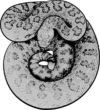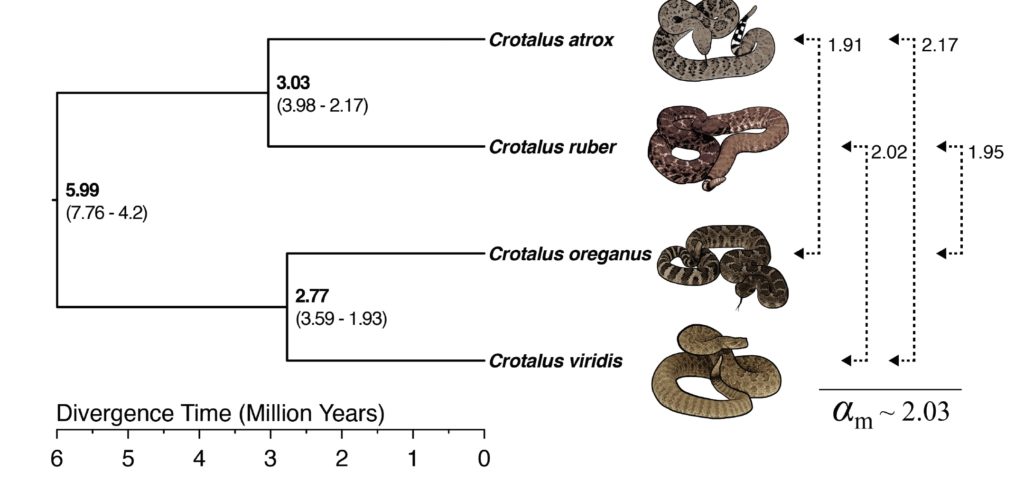Congrats to lab alumni Drew Schield, and lab members Blair and Zach, on a new paper that uses population genomic data from rattlesnakes to test (and confirm) evidence for male-based mutation rates!
Schield, D.R., B.W. Perry, Z.L. Nikolakis, S.P. Mackessy, and T.A. Castoe. 2021. Population genomic analyses confirm male-biased mutation rates in snakes. Journal of Heredity 112: 221.227. PDF
Male-biased mutation rates occur in a diverse array of organisms. The ratio of male-to-female
mutation rate may have major ramifications for evolution across the genome, and for sex-linked
genes in particular. In ZW species, the Z chromosome is carried by males two-thirds of the time,
leading to the prediction that male-biased mutation rates will have a disproportionate effect on
the evolution of Z-linked genes relative to autosomes and the W chromosome. Colubroid snakes
(including colubrids, elapids, and viperids) have ZW sex determination, yet male-biased mutation
rates have not been well studied in this group. Here we analyze a population genomic dataset
from rattlesnakes to quantify genetic variation within and genetic divergence between species.
We use a new method for unbiased estimation of population genetic summary statistics to
compare variation between the Z chromosome and autosomes and to calculate net nucleotide
differentiation between species. We find evidence for a 2.03-fold greater mutation rate in male
rattlesnakes relative to females, corresponding to an average μZ/μA ratio of 1.1. Our results from
snakes are quantitatively similar to birds, suggesting that male-biased mutation rates may be a
common feature across vertebrate lineages with ZW sex determination.

